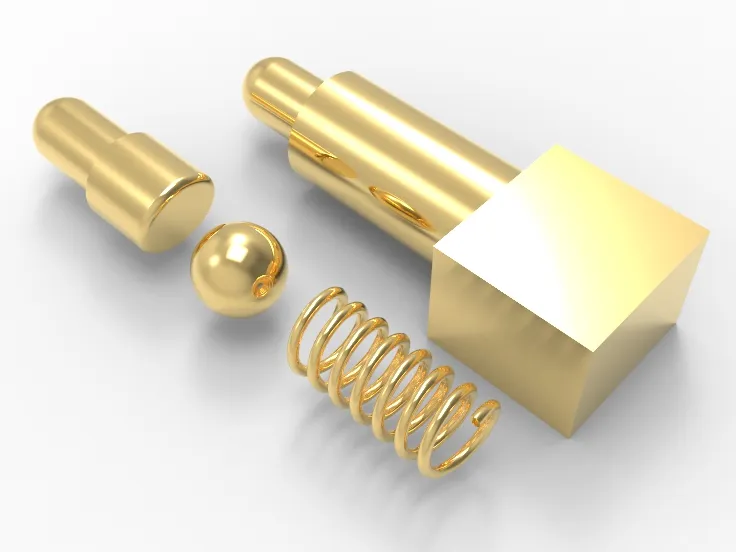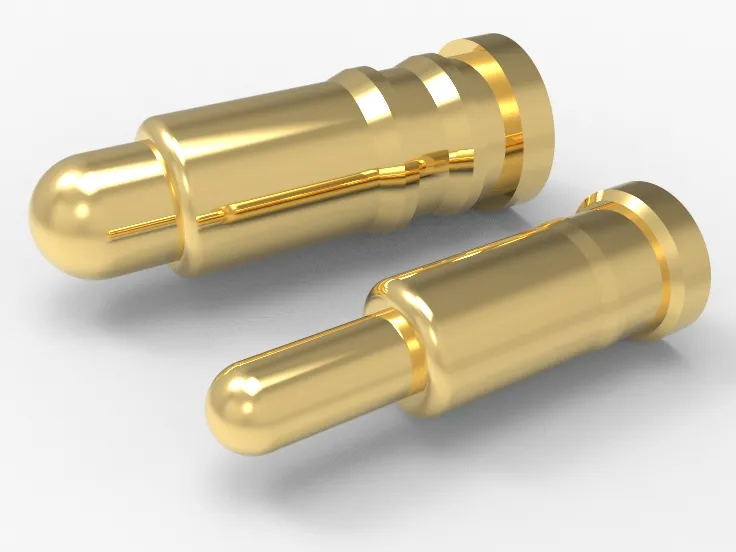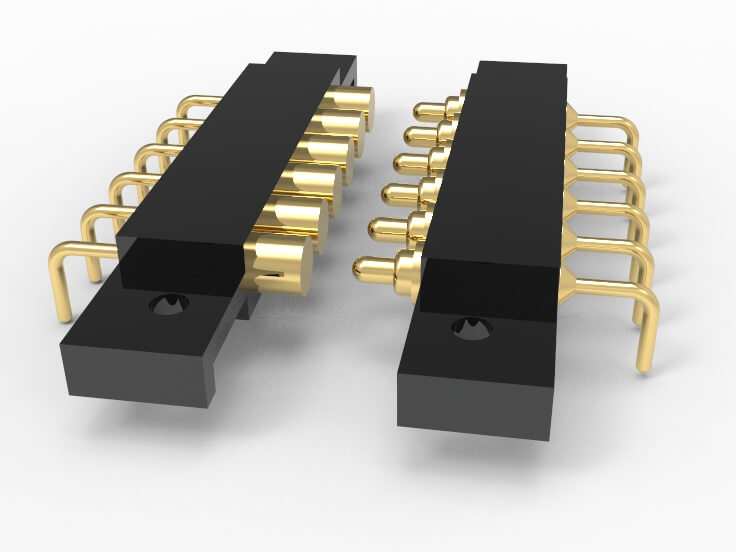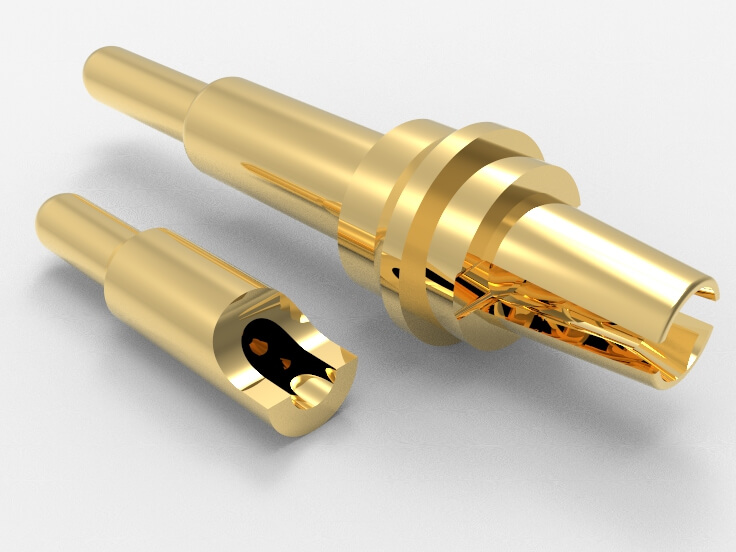Manufacturing & Pogo Pin Connector: Explore How Manufacturing Intricacies Influence Pogo Pin Connector Assembly. Get the Essential Knowledge
1. Introduction: Manufacturing and Pogo Pin Connector Assembly
In today’s fast-paced tech world, Pogo Pin connector stands out for their excellent conductivity and versatile applications, becoming essential components in various electronic devices. Behind these tiny, precise connectors lies a complex and refined manufacturing process.
This article will guide you through the Pogo Pin connector’s journey from design to finished product, revealing how each step ensures its high reliability and outstanding performance. We’ll uncover the advanced manufacturing technologies involved and show how they impact the final product’s quality and functionality.
Whether you’re an industry expert or a curious reader, this article offers a detailed and professional perspective, providing a fresh understanding of Pogo Pin connector.
2. Materials Selection: Building the Quality Foundation
The high-quality performance of Pogo Pin connector depends on their intricate manufacturing process, particularly the choice of materials, which establishes the quality foundation for these connectors.
- Copper Alloy: High-purity copper alloy is used for its excellent conductivity and mechanical strength, ensuring stable signal transmission. Connectors made from this material maintain low loss in high-frequency signal transmission, delivering high performance.
- Gold Plating: A 24K gold plating significantly enhances the connector’s corrosion resistance and conductivity. Gold’s superior conductivity and oxidation resistance ensure Pogo Pins perform well in high-temperature, high-humidity environments.
- Spring Steel: The internal springs are made from high-quality spring steel, offering high elasticity and fatigue resistance. This ensures that Pogo Pins maintain stable contact pressure and reliable connection performance even after numerous insertions and removals.
- Insulating Materials: High-temperature and abrasion-resistant engineering plastics are used as insulating materials, preventing current leakage and maintaining excellent insulation properties and mechanical strength in harsh environments.
- Nickel Plating: A nickel layer is added between the copper alloy base and gold layer for isolation and protection, preventing corrosion of the underlying metal and extending the lifespan of the Pogo Pin.
- Corrosion-Resistant Coating: A special corrosion-resistant coating further improves the environmental durability of the Pogo Pin, maintaining stable electrical connections even in acidic, alkaline, and salt-laden environments.
- Precision Processing: High-precision CNC machines are used to process each Pogo Pin, controlling dimensional tolerance to the micron level. This ensures precise matching during assembly and reliable contact performance.
The exceptional quality of Pogo Pin connector is a result of its complex and refined manufacturing process. By choosing high-quality materials and employing advanced manufacturing technologies, manufacturers produce connectors with outstanding performance and reliability. As technology advances, Pogo Pin connector will benefit from even more refined and efficient manufacturing processes, offering higher quality connection solutions across various industries.
3. Precision Manufacturing: Process Breakdown
Pogo Pin connector is high-precision, reliable components used in various electronic devices. Their manufacturing process is complex, involving several meticulous steps. Here’s a simplified look at the process:
3.1 Material Selection
- High-Quality Materials: Manufacturing starts with selecting premium materials. Copper alloys or stainless steel are used for the pins, and high-grade spring steel ensures the necessary elasticity. Gold or nickel plating is applied for corrosion and conductivity improvement.
3.2 Precision Machining
- CNC Machining: Materials are shaped into pins and sleeves using precise CNC machines. This step ensures accuracy, with multiple size checks to maintain tolerance levels.
3.3 Spring Manufacturing
- High-Precision Springs: Springs, crucial to Pogo Pins, are made from high-strength spring steel through winding. Strict control over spring tension and deformation ensures durability over time.
3.4 Surface Treatment
- Plating and Coating: After machining, pins and sleeves undergo surface treatments such as gold, nickel, or tin plating. This enhances conductivity, wear resistance, and corrosion resistance.
3.5 Assembly
- Precision Assembly: Parts are carefully assembled following quality checks. Automated equipment ensures tight fitting of springs with pins and sleeves to prevent looseness or detachment.
3.6 Performance Testing
- Rigorous Testing: Assembled connectors undergo tests for electrical performance, mechanical strength, and environmental adaptability, ensuring high performance in various conditions.
3.7 Packaging
- Packaging and Shipping: Tested connectors are cleaned and packaged to prevent damage during transport. Packaging options include anti-static and vacuum packaging to meet different customer needs.
Each high-performance Pogo Pin connector is crafted with precise processes to ensure exceptional performance and reliability in demanding environments. The stringent manufacturing practices underpin the quality and durability of these connectors.
4. Quality Control: Ensuring High Standards, Manufacturing and Pogo Pin Connector Assembly
4.1 Rigorous Quality Control and Precision Craftsmanship: The Flawless Performance Behind Pogo Pin Connector
- High-performance Pogo Pin connector requires stringent quality control at every step, from material selection to final inspection. Each pin undergoes precise dimensional control and electrical performance testing to maintain stable connectivity and excellent conductivity under high loads.
4.2 Precision Engineering and Outstanding Performance: The Secrets of Pogo Pin Connector Manufacturing
- To ensure high performance, each pin is meticulously processed and carefully plated. Rigorous process controls guarantee that every batch meets the highest tolerance and surface finish standards, ensuring long-term stability and reliability.
4.3 Craftsmanship and Quality Assurance: The Top Quality Control Secrets Behind Pogo Pin Connector
- Quality control is central to Pogo Pin production. Each connector undergoes extensive testing, including oxidation resistance, wear resistance, and electrical performance, to ensure exceptional performance in various environments.
4.4 Efficient and Stable, Thanks to Precision: The Superior Quality Control Process for Pogo Pin Connector
- The high performance of Pogo Pin connector depends not only on precise design but also on strict quality control throughout the production process. Automated equipment and rigorous quality monitoring ensure each pin meets or exceeds performance expectations.
4.5 From Strict Control to High Efficiency: The Manufacturing Secrets Behind Superior Pogo Pin Performance
- High-performance Pogo Pin connector requires thorough quality control throughout the process. Each step is carefully monitored to ensure the product meets top standards in dimensions, conductivity, and durability, providing stability and reliability in use.
Through these stringent quality control measures, we not only ensure high quality and performance but also set a benchmark in the industry. We are committed to customer satisfaction, continuously improving product quality and service to offer the best connector solutions.
5. Assembly Process: Key to Performance, Manufacturing and Pogo Pin Connector Assembly
- Material Selection: Use high-purity conductive materials to ensure Pogo Pins maintain stable contact performance in various environments. Select the best materials through rigorous testing to ensure durability and conductivity.
- Precision Molding: The precision of mold machining affects Pogo Pin size and tolerance. Use high-precision CNC equipment to meet strict manufacturing standards for accurate Pogo Pin production.
- Surface Treatment: Apply gold or silver plating to enhance Pogo Pin’s oxidation and corrosion resistance, ensuring long-term reliability in harsh conditions.
- Spring Loading: Proper spring loading is crucial for Pogo Pin performance. Adjust springs precisely to provide optimal contact pressure and stable current transmission.
- High-Precision Assembly: Utilize automated equipment for precise assembly, ensuring each Pogo Pin meets performance standards and reducing defect rates.
- Automated Testing: Implement smart detection systems to monitor every assembly step in real-time, quickly identifying and removing defects to ensure high product quality.
- High-Temperature Soldering: Control temperature and time during soldering to avoid damaging the coating and ensure strong, conductive solder joints. Optimized soldering ensures stable performance in high temperatures.
- Micron-Level Calibration: Calibrate Pogo Pins to micron-level precision to ensure perfect fit and function in high-density circuits, avoiding contact issues from size errors.
- Durability Testing: Conduct intense durability tests to simulate long-term use and ensure Pogo Pins maintain excellent electrical and mechanical performance.
- Final Assembly and Packaging: Perform thorough final inspections to meet design standards, then use anti-static and moisture-proof packaging to protect the product during transport and storage.
6. Innovation and Development: Future Trends, Manufacturing and Pogo Pin Connector Assembly
6.1 Next-Gen Pogo Pin Connector: Precision and Longevity Redefined
- Future Pogo Pin connector will feature nanocoating technology to greatly enhance corrosion resistance and lifespan. Advanced manufacturing will boost contact reliability and precision for better signal transmission.
6.2 The Future of High-Performance Pogo Pins: Modular Design for Versatile Applications
- Modular designs will enable Pogo Pin connector to integrate multiple functions, meeting diverse needs while reducing size and enhancing overall device performance.
6.3 Smart Manufacturing and Pogo Pins: From Miniaturization to Smart Tech
- With advancements in smart manufacturing, Pogo Pin connector will become more intelligent and compact. New sensor and control technologies will improve adaptability and monitoring in complex scenarios.
6.4 Eco-Friendly Tech Meets High Performance: Sustainable Materials for Pogo Pins
- Future Pogo Pin connector will balance eco-friendly materials with high performance. New alloys and coatings will achieve efficient conduction while being environmentally friendly.
6.5 High-Speed Era of Pogo Pins: Meeting 5G and Future Network Demands
- As we enter the 5G and higher frequency era, Pogo Pin connector will face new challenges in speed and frequency. Optimized contact surfaces and materials will ensure stable high-speed signal transmission.
Conclusion
In today’s competitive market, the precision of manufacturing directly impacts the performance and reliability of Pogo Pin connector. As technology advances and market demands evolve, mastering and applying advanced manufacturing techniques is crucial for both enhancing connector quality and staying competitive.
If you’re aiming to secure a reliable source and partner for high-performance connectors in the future, deeply understanding the manufacturing process of Pogo Pin connector is a decisive step. Act now to get ahead—your next-generation Pogo Pin connector is ready to shape the future!









